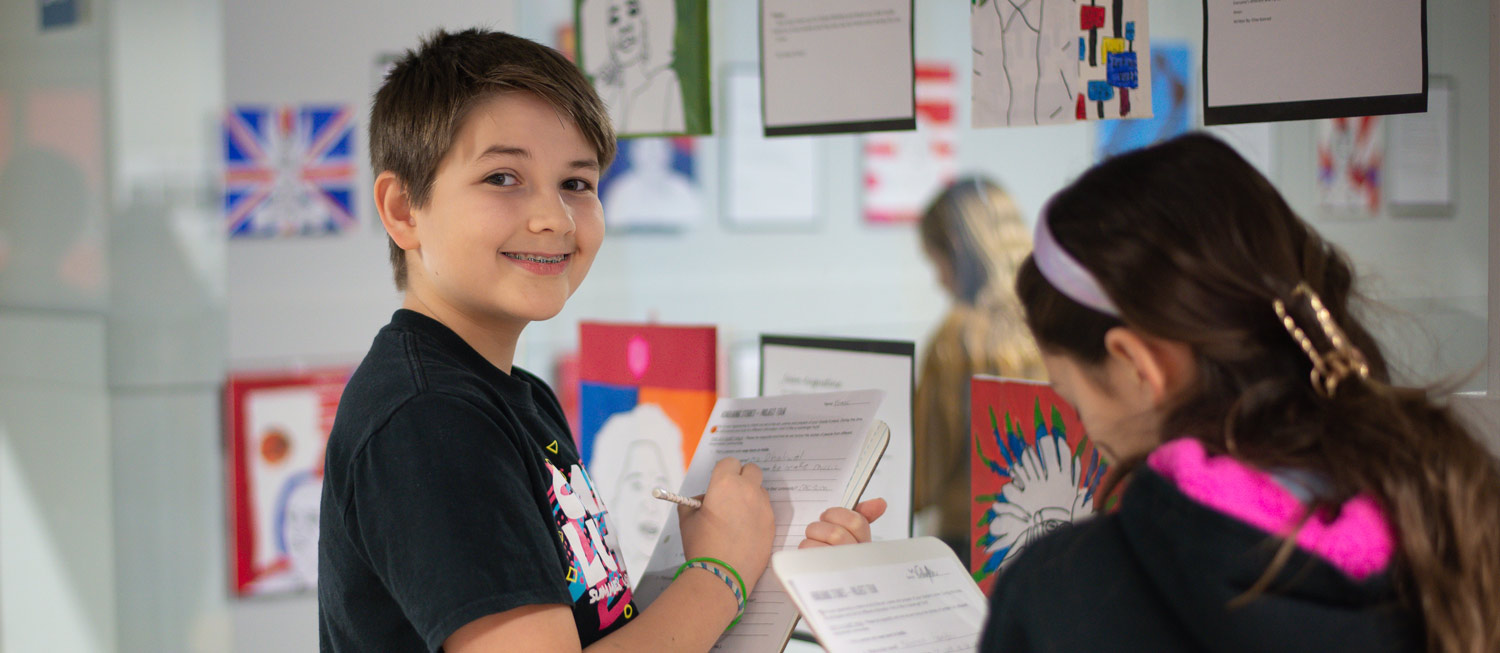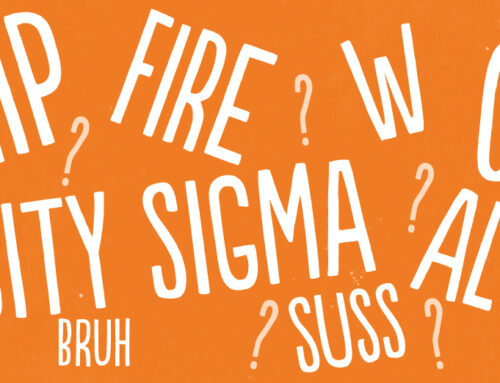You are so weird!
Usually, this would sound like an insult to any middle school student. The comment seems to target a student’s self-esteem, their sense of belonging, and tells them they don’t fit in. What would happen if students found a way to see this comment as a compliment—a statement that affirms the reality that they are fearfully and wonderfully made?
Jordyn Erickson and Kirsten Klompmaker, grade 6 teachers, were inspired to redesign the grade 6 social studies curriculum during the 2022 Residency, a professional development week-long intensive. They wanted to increase student understanding of cultural diversity and awareness through different projects.
Jordyn concluded that students need to understand their own cultural identity before they can understand the stories of others around them. She explained, “In order for my students to understand others, they would need to look internally first.”
She then shared her vision with the grade 6 teaching team, who excitedly joined her in leading the students on a journey from self-discovery to an appreciation for the diversity seen in our global community.
A Wacky Sight
Weird Day. What a start. As each grade 6 teacher walked the halls with wacky hats, brightly mismatched clothes, pigtails, and smiles, they greeted their students who were also dressed up. Everyone participated in a series of odd activities such as walking backwards for part of the day, wearing shoes on their hands, and sticking their tongue out instead of raising their hand.
By the end of the day, the hope was that within the fun, students would recognize the grey area between weird and normal, and then see the role of empathy and perspectives. This unit was just the right type of different to engage every student’s mind.
After sharing a story of a refugee from Sudan who was given a puffy coat to wear upon arrival to the United States, Jordyn asked the students to picture how foolish they must have felt—how weird it was to wear such clothing—only to find out that it was perfectly normal to those who greeted him in Rochester, New York.
Jordyn then asked her students the driving question of the whole unit. “How does where we live make us weird?” The students slowly started to engage, explaining, for example, that some people might think wearing rubber boots to school would seem pretty strange.
Weird? Just Normal
Over time, Jordyn watched as the grade 6 students slowly allowed themselves to become more vulnerable, sharing their special talents, their unique ancestry, and their weirdness. The students dissected their ordinary activities to find out what might be strange if others were to analyze the same data.
These realizations were too interesting not to share and so, the grade 6 classes visited the grade 4 classes and showed them what was weird and what was normal. Jordyn chuckled as she witnessed her students explain that normal might actually be weird!
“It was so inspiring to see that they were noticing that everyone comes from a different place. That their family, their home country, their geographical location according to temperatures—all of those things affect how their daily life looks. As a result, what they do might seem weird to others, but it is normal for them.”
A Story To Tell
Kirsten then joined Jordyn in creating the next unit. Just as it was helpful for the students to listen to each other’s identity stories, Kirsten explored the deep value in listening to stories of those beyond the classroom walls to expand understanding of social justice, prejudice, and how to celebrate the lives of those in marginalized communities.
Kirsten took her students on a learning journey where they saw brokenness and the promise of new life.
Beginning the Honouring Stories unit with the KAIROS Blanket Exercise, Kristen then introduced stories of slavery and Martin Luther King Jr.’s great speech, stories of South Asian and East Asian immigrants, and knowing what it feels like to be truly heard.
This is when students started digging in.
Realizing that everyone has a story to tell, they researched individuals from marginalized communities.
From Rosa Parks, Gurdeep Pandher, Murray Sinclair, and Patrick Chan, students found ways to visually celebrate their stories. Kirsten watched in amazement at the level of student engagement. “Students researched a story, how they were marginalized, and found ways to celebrate their stories and their culture. Their artwork displayed a portrait of their person of study along with a background that represented their culture. It turned out really beautiful.”
Overall, 105 stories were on display for a gallery walk during the Christian Deeper Learning Pre-Conference hosted at ACS in March 2023.
As Kirsten walked along the hallway, gazing at the unique stories of people from around the world, she couldn’t help but realize how her students were taking part in shaping the world around them. Instead of silencing stories that were difficult to hear, she saw what honouring can truly look like.
“I’m proud of them. As grade 6 students, they looked beyond themselves to create a project that honoured someone else’s unique story. Part of the project was to understand that we are all weird and different and see everyone as made in God’s image. The big step…was understanding that we can be part of a better future if we understand our global community better.”
So, next time a middle school student lets you know you are weird…take it as a compliment and let them know that they may be a little bit weird too.






WHAT DO YOU THINK?